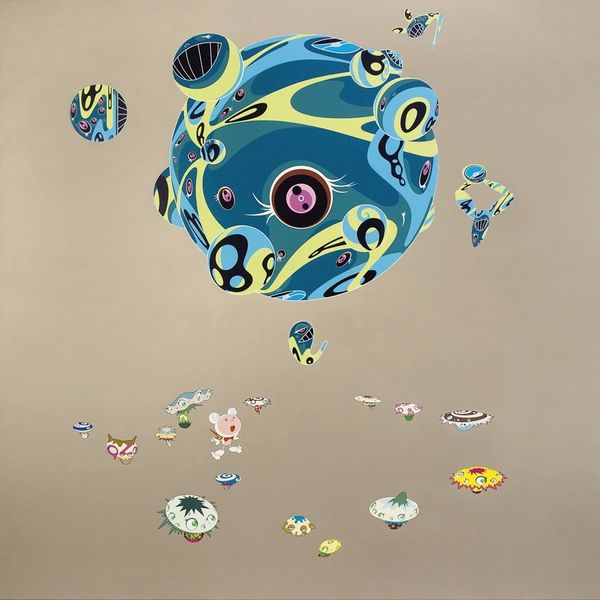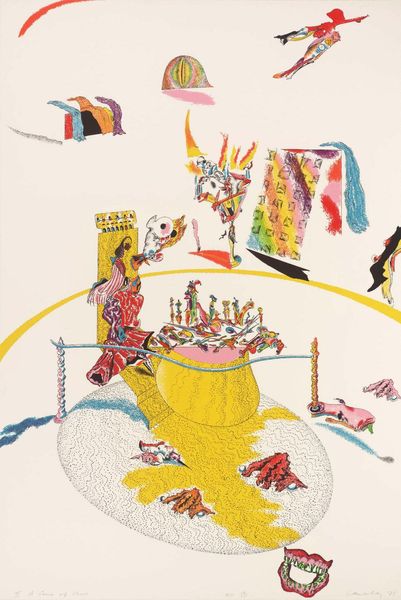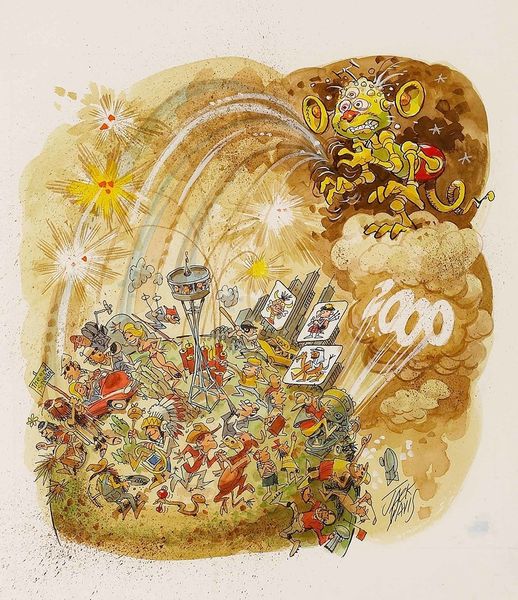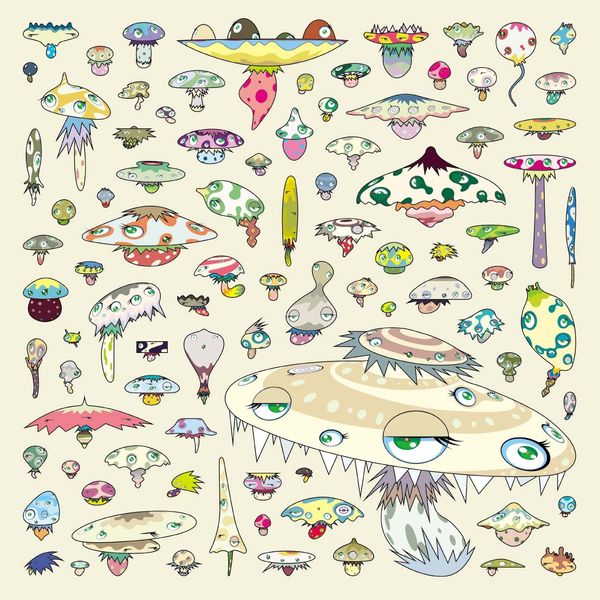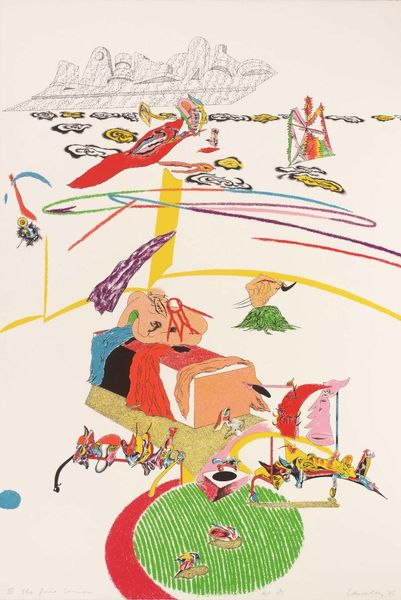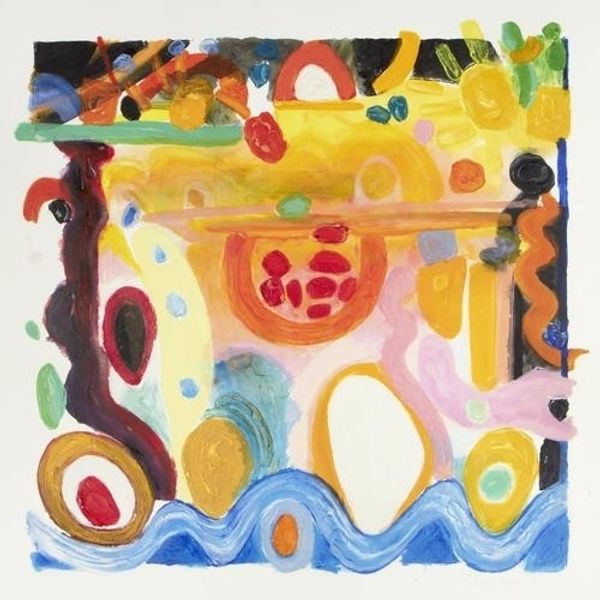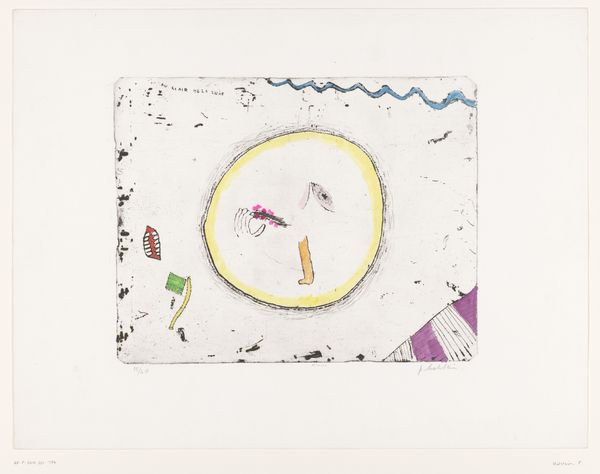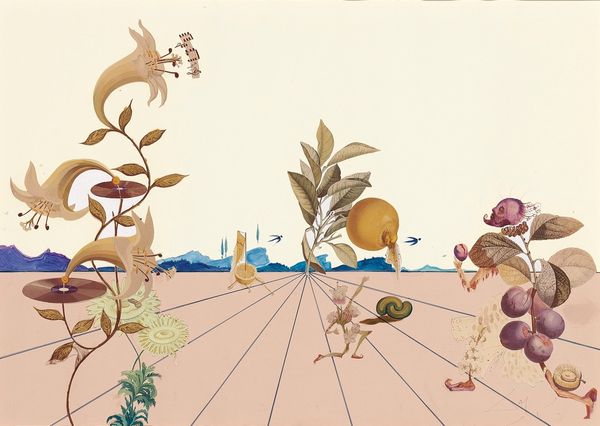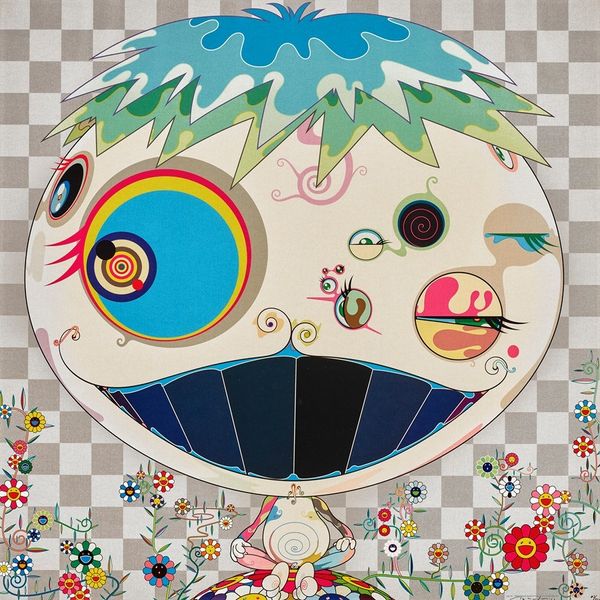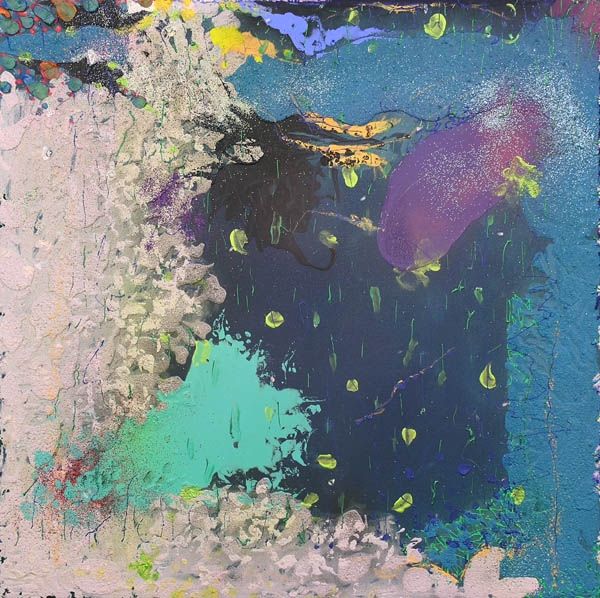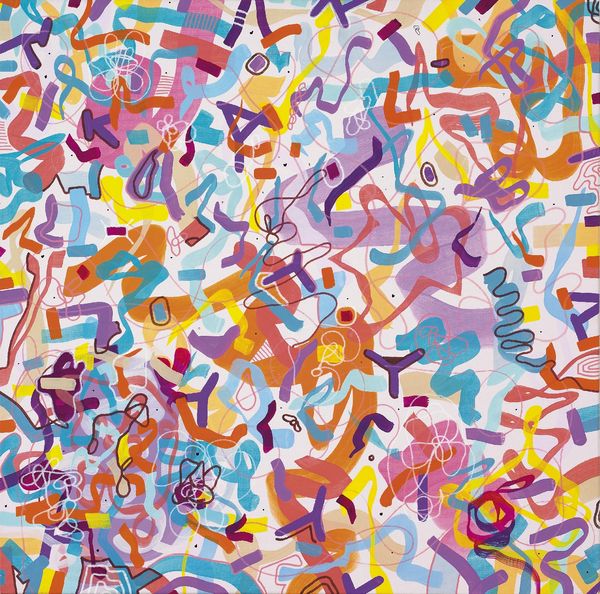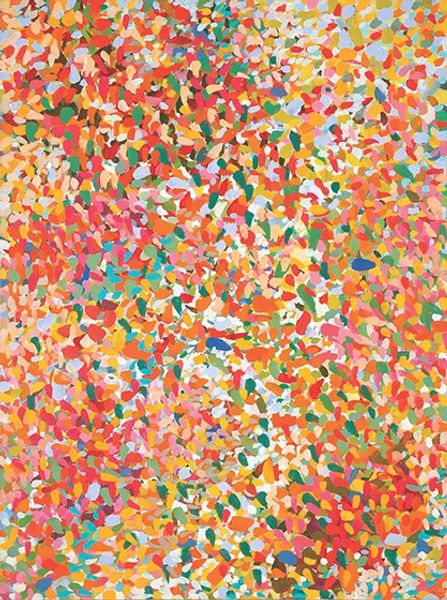
#
neo-pop
Copyright: Modern Artists: Artvee
Curator: Takashi Murakami's 2004 painting, "Making a U-Turn, the Lost Child Finds his Way Home," presents us with a landscape populated by... are those sentient mushrooms? Editor: My initial impression is "fantastical and unsettling." The overall effect is like entering a dreamscape where familiar forms take on slightly sinister or bizarre qualities. Curator: That tracks with Murakami’s broader project. These aren’t your standard fairytale fungi; they're loaded with cultural and psychological symbolism. Mushrooms, throughout history, have been associated with transformation, the subconscious, even the dangerous allure of altered states. What do you make of their cartoonish features, the bulging eyes on their caps? Editor: I read it as a commentary on hyper-commercialized cuteness in contemporary culture, especially in Japan. The forced smile of that massive head hovering above everything – it's creepy! Underneath the playful Pop Art aesthetic, is Murakami critiquing the pressures on youth and the commodification of innocence? Curator: It's hard to ignore the historical context. Consider Japan's post-war economic boom, followed by periods of recession and societal anxiety. The artist emerged from this very specific socio-political landscape. His embrace of flattened perspective and vivid, almost acidic colors might also reference traditional Japanese art. He’s turning high art into a commercially viable brand, really forcing a confrontation of values. Editor: Do you think the seemingly innocent figures, the mushroom and child forms, echo past trauma and collective fears around nuclear fallout? Curator: Absolutely. This work operates on multiple levels. There's the immediate pop aesthetic, yes. But then you delve into the darker undercurrents – the anxiety, the fear, perhaps even a yearning for simpler times lost in a rapidly changing world. He uses an iconography familiar from mass media to explore societal anxieties about economic instability, globalization, and even cultural identity. Editor: What a fascinating blend of cultural commentary and personal expression. This piece shows how Pop Art can evolve into potent, relevant statements about who we are, or perhaps who we fear becoming. Curator: A landscape that prompts us to examine both external societal pressures and our internal struggles, reflected back at us with playful but knowing eyes.
Comments
No comments
Be the first to comment and join the conversation on the ultimate creative platform.
